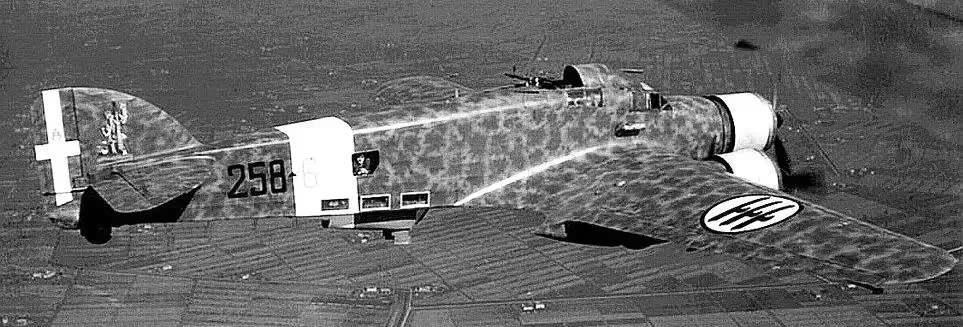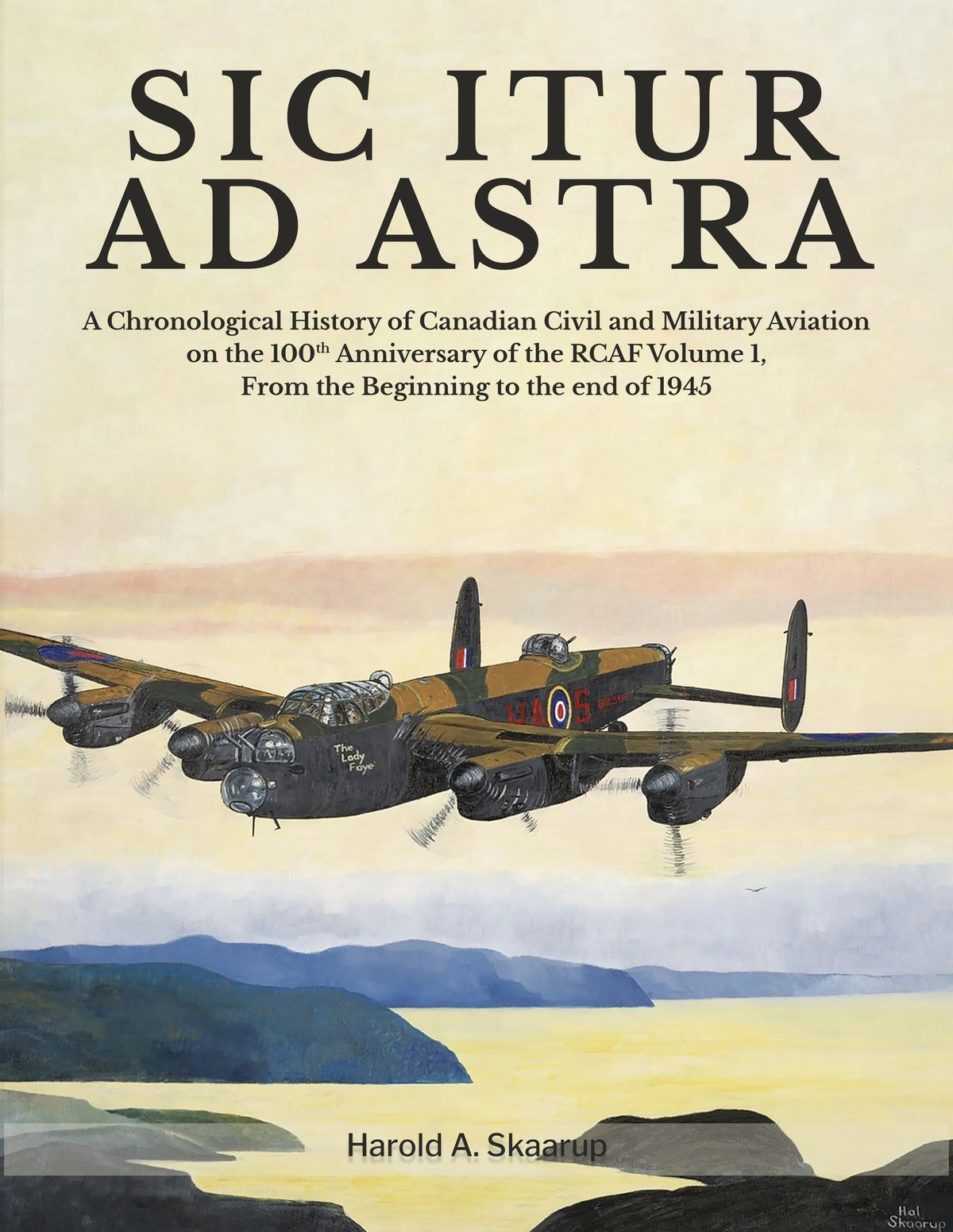Warplanes of Italy: Regia Aeronautica, Savoia-Marchetti SM.79 Sparviero
Savoia-Marchetti SM.79 Sparviero

(Regia Aeronautica Photo)
The Savoia-Marchetti SM.79 Sparviero (Sparrowhawk) was a three-engined Italian medium bomber. It may be the best-known Italian warplane of the Second World War. The SM.79 was easily recognizable due to its fuselage's distinctive dorsal "hump", and was reportedly well liked by its crews, who nicknamed it il gobbo maledetto ("damned hunchback").
The SM.79 was developed in the early 1930s. It was a cantilever low-wingmonoplane of combined wood and metal construction, designed with the intentionof producing a swift eight-passenger transport aircraft capable of besting thefastest of its contemporaries, but its potential as a combat aircraft quicklyattracted the attention of the Italian government. Performing its first flighton 28 September 1934, early examples of the type established 26 separate worldrecords between 1937 and 1939, qualifying it for some time as the fastestmedium bomber in the world. As such, the SM.79 quickly came to be regardedas an item of national prestige in Fascist Italy, attracting significantgovernment support and often being deployed as an element of state propaganda. Early on, the aircraft was routinely entered in competitive fly-offs and air races,seeking to capitalise on its advantages, and often emerged victorious in suchcontests.
The SM.79 first saw combat during the Spanish Civil War. In this theatre it normally operated without fighter escort, relying on its relatively high speedto evade interception. While some problems were identified, and in some cases resolved, the SM.79's performance during the Spanish deployment was encouraging and stimulated demand for the type, including a decision to adopt it as the backbone of Italy's bomber units. Both Yugoslavia and Romania opted to procurethe type for their own air services, while large numbers were also procured forthe Regia Aeronautica. Almost 600 SM.79-I and –II aircraft were in service when Italy entered the Second World War in May 1940; thereafter, they were deployedin every theatre of war in which the Italians fought.
The SM.79 was operated in various capacities during the Second World War,initially being used mainly as a transport aircraft and medium bomber.[2]Following pioneering work by the "Special Aerotorpedoes Unit", Italyput the type to work as a torpedo bomber; in this role, the SM.79 achievednotable successes against Allied shipping in the Mediterranean theatre of thewar.[5] A specialised drone version of the aircraft flown by remote control wasalso developed, although the Armistice with Italy was enacted prior to anyoperational deployment. It was the most numerous Italian bomber of the SecondWorld War, with about 1,300 built. The type would remain in Italian serviceuntil 1952. (Wikipedia

(Regia Aeronautica Photo)
A Savoia-Marchetti S.M.79 of the 193ª Squadriglia Bombardamento Terrestre (193th Land Bombing Squadrilla), 87º Gruppo (87th Group), 30º Stormo (87th Wing).
The SM.79 was a cantilever low-wingmonoplane trimotor, with a retractable taildragger undercarriage. The fuselage used a welded tubular steel frame structure, which was covered with duralumin on the forward section, a mixture of duralumin and plywood across theupper fuselage surface, and fabric for all of the other exteriorsurfaces.[6][18] The wings were of all-wood construction, with trailing edgeflaps and leading edge slats (Handley Page style) to offset their relativelysmall size. The internal structure was made of three spruce and plywood spars, linked with plywood ribs, with a skin of plywood. The wing had a dihedral of 2° 15'. The ailerons were capable of rotating through +13/-26°, andwere used together with the flaps in low-speed flight and in takeoff. The aircraft's capabilities were significantly greater than its predecessor, the SM.75, with over 1,715 kW (2,300 hp) available and a high wing loading that gave it characteristics similar to a large fighter.
The engines fitted to the main bomber version were three 582 kW (780 hp) AlfaRomeo 126 RC.34 radials, equipped with variable-pitch, all-metal three-bladedpropellers. Speeds attained were around 430 km/h (270 mph) at 4,250 m(13,940 ft), with a relatively low practical ceiling of 6,500 m (21,300 ft). Cruise speed was 373 km/h (232 mph) at 5,000 m (16,000 ft), but the best cruise speed was 259 km/h (161 mph) (60% power). The landing was characterized by a 200 km/h (120 mph) final approach with the slats extended, slowing to 145 km/h (90 mph) with extension of flaps, and finally the run over the field with only 200 m (660 ft) needed to land (2,050 rpm, 644 Hg pressure).
The SM.79 was typically operated by a crew of five (or a crew of six in the bomber version). The cockpit was designed for the accommodation of two pilots seated in a side-by-side configuration. Instrumentation in the central panel included oil and fuel gauges, altimeters for low (1,000 m, 3,300 ft) and high altitude (8,000 m, 26,000 ft), clock, airspeed and vertical speed indicator, gyroscope, compass, artificial horizon, turn and bank indicator, rev counters and throttles. (Wikipedia)

(Regia Aeronautica Photo)
Two Savoia-Marchetti S.M.79 of the 193ª Squadriglia Bombardamento Terrestre (193th Land Bombing Squadrilla), 87º Gruppo (87th Group), 30º Stormo (87th Wing).

(Regia Aeronautica Photo)
Savoia-Marchetti S.M.79 Sparviero, I92-2.

(Riggio Family Photo)
A Savoia-Marchetti S.M.79 of the 193ª Squadriglia Bombardamento Terrestre. 1940.

(Riggio Family Photo)
A Savoia-Marchetti S.M.79 of the 193ª Squadriglia Bombardamento Terrestre (193th Land Bombing Squadrilla), 87º Gruppo (87th Group), 30º Stormo (87th Wing).

(Regia Aeronautica Photo)
Savoia-Marchetti S.M.79 Sparviero.

(Riggio Family Photo)
A Savoia-Marchetti S.M.79 of the 193ª Squadriglia Bombardamento Terrestre (193th Land Bombing Squadrilla), 87º Gruppo (87th Group), 30º Stormo (87th Wing).

(Regia Aeronautica Photo)
Savoia-Marchetti S.M.79 Sparviero, 205-1.

(Regia Aeronautica Photo)
Savoia Marchetti SM.79 Sparviero flying with a fighter escort of Macchi C.200 Saettas.
.avif)
(NMUSN Photo)
Savoia-Marchetti S.M.79 Sparviero, 10-7.

(Regia Aeronautica Photo)
Savoia-Marchetti S.M.79 Sparviero torpedo bomber.

(Regia Aeronautica Photo)
Savoia-Marchetti S.M.79 Sparviero torpedo bomber.

(Regia Aeronautica Photo)
Savoia-Marchetti S.M.79 Sparviero torpedo bomber.

(Regia Aeronautica Photo)
Savoia-Marchetti S.M.79 Sparviero torpedo bomber.

(Regia Aeronautica Photo)
Savoia Marchetti Italian bomber SM.79.

(Regia Aeronautica Photo)
Savoia Marchetti Italian bomber SM.79. Italian aircrew known as the "Green Mice" deliver mail, 1945.

(Regia Aeronautica Photo)
Savoia Marchetti SM.79 machine-gunner manning a 12.7 mm (0.500 in) Breda-SAFAT machine gun.

(Regia Aeronautica Photo)
Savoia Marchetti SM.79 Sparviero, 258.

(Regia Aeronautica Photo)
Savoia Marchetti SM.79 Sparviero 215.

(Regia Aeronautica Photo)
Savoia Marchetti SM.79 Sparviero, 18.

(Regia Aeronautica Photo)
Savoia Marchetti SM.79 Sparviero, 229-2.

(Regia Aeronautica, Andrea Nicola Photo)
193ª Squadriglia (193th Squadrilla), 87º Gruppo (87th Group), 30º Stormo (30th Wing).

(Regia Aeronautica Photo)
Savoia Marchetti SM 79 Sparviero formation.

(Regia Aeronautica Photo)
Savoia Marchetti SM.79 Sparviero, 58-2.

(Regia Aeronautica Photo)
Savoia Marchetti SM.79 Sparviero, after completing a mission.

(Regia Aeronautica Photo)
Savoia Marchetti SM 79 Sparviero in Sicily.

(Regia Aeronautica Photo)
Savoia Marchetti SM.79 Sparviero

(Regia Aeronautica Photo)
Savoia Marchetti SM.79 Sparviero.

(Regia Aeronautica Photo)
Savoia Marchetti SM.79 Sparviero.

(Regia Aeronautica Photo)
Savoia Marchetti SM.79 Sparviero squadron being inspected by Mussolini.

(Regia Aeronautica Photo)
Savoia Marchetti SM.79 Sparviero bombers in formation. Spanish Civil War.

(Regia Aeronautica Photo)
Savoia Marchetti SM.79 Sparviero, 16. Spanish Civil War.

(Regia Aeronautica Photo)
Savoia Marchetti SM.79 Sparviero, Spanish Civil War.

(Regia Aeronautica Photo)
Savoia Marchetti SM.79 Sparviero. Spanish Civil War.

(Regia Aeronautica Photos)
Savoia-Marchetti SM.79 Sparviero. Spanish Civil War.

(Copyright NA3T)
Savoia-Marchetti SM.79 Sparviero (Sparrowhawk) bomber/transport, in RAF markings. Three of four Savoia-Marchetti S.M.79 Sparviero (Sparrowhawk)s flew into Heliopolis, Greece on 19 April 1941 carrying gold bullion. These were former Yugoslav Air Force aircraft which went into operation with No. 117 RAF Squadron in Khartoum on 30 April 1941. A fourth arrived shortly afterwards. Savoia-Marchetti S.M.79 Sparviero (Sparrowhawk) (Serial No. 3712), AX702, flew with the Yugoslav Air Force and was delivered to No. 117 Squadron on 26 May 1941. S.M.79K (Serial No. 3713), AX703 went to the same unit, then on to No. 117 Squadron. It crashed on 17 November 1941 near Takoradi, after the failure of one of its engines. S.M.79K (Serial No. 3714) arrived with AX702, final fate not known. S.M.79K (Serial No. 3702), AX705 was the third aircraft and served with No. 2 Photographic Reconnaissance Unit at Heliopolis from 3 January 1942, until it was damaged in a landing accident on 27 February 1942 and struck off charge.

(RAF Photo)
After the Axis invasion of Yugoslavia, No. 117 Squadron RAF operated four ex-Yugoslav SM.79s K in the Middle East, from May 1941 to November 1941.


Savoia-Marchetti SM.79 Sparviero (Sparrowhawk), (Serial No. MM 22174) of the Regia Aeronautica, was taken over by No. 145 Squadron, RAF at Castel Benito on the unit’s arrival there on 8 February 1943. This aircraft was repainted in British markings with the Squadron code letters ZX, and used extensively as a Squadron communications aircraft and wore the name Gremlin HQ. The aircraft was later handed over to a USAAF unit, but was destroyed by fire before it could be flown. Another aircraft captured at Castel Benito was a Fiat G.50 Freccia single-engined fighter, which was also painted in RAF markings, but later handed over to the USAAF 79th Fighter Group. (RAF Photos)

(USAAF Photo)
Savoia-Marchetti SM.79 Sparviero (Sparrowhawk) bomber/transport, in USAAF markings.




(Alan Wilson Photos)
Savoia-Marchetti SM.79 Sparviero (Sparrowhawk) bomber/transport, an ex-Lebanese aircraft on display at the Museo Storico dell' Aeronautica Militare Italiana at Vigna di Valle, north of Rome.

(Moshe Pridan Photo, Israeli National Photo Collection)
Savoia-Marchetti SM.79 Sparviero (Sparrowhawk) bomber/transport, in Lebanese Air Force colours. The Lebanese Air Force ordered four SM.79L bomber aircraft in 1946, which were delivered in 1949 and used as military transports. This Sparviero was forced down by the Israeli Air Force, 28 May 1959.

(M.L. Watts Photo )

(Ennio Varani Photo)

(Matteo Ianeselli Photo)
Savoia-Marchetti SM.79 Sparviero (Sparrowhawk) bomber/transport, iin Lebanese Air Force colours, on display at the Museo dell'Aeronautica Gianni Caproni at Trento, Italy.





